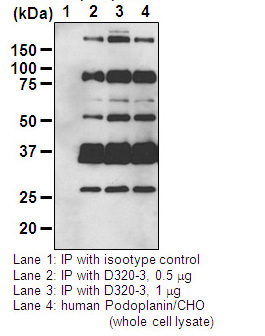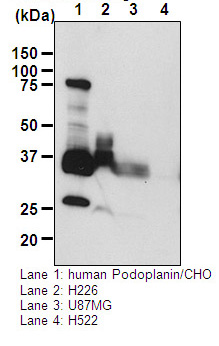Anti-Podoplanin (Human) mAb
Product Code:
MBL-D320-3
MBL-D320-3
Host Type:
Rat
Rat
Antibody Isotype:
IgG2a κ
IgG2a κ
Antibody Clonality:
Monoclonal
Monoclonal
Antibody Clone:
NZ-1.2
NZ-1.2
Regulatory Status:
RUO
RUO
Target Species:
Human
Human
Applications:
- Flow Cytometry
- Immunohistochemistry (IHC)
- Immunoprecipitation (IP)
- Western Blot (WB)
Shipping:
4°C
4°C
Storage:
-20°C
-20°C
No additional charges, what you see is what you pay! *
| Code | Size | Price |
|---|
| MBL-D320-3 | 100 ul | £328.00 |
Quantity:
Prices exclude any Taxes / VAT






